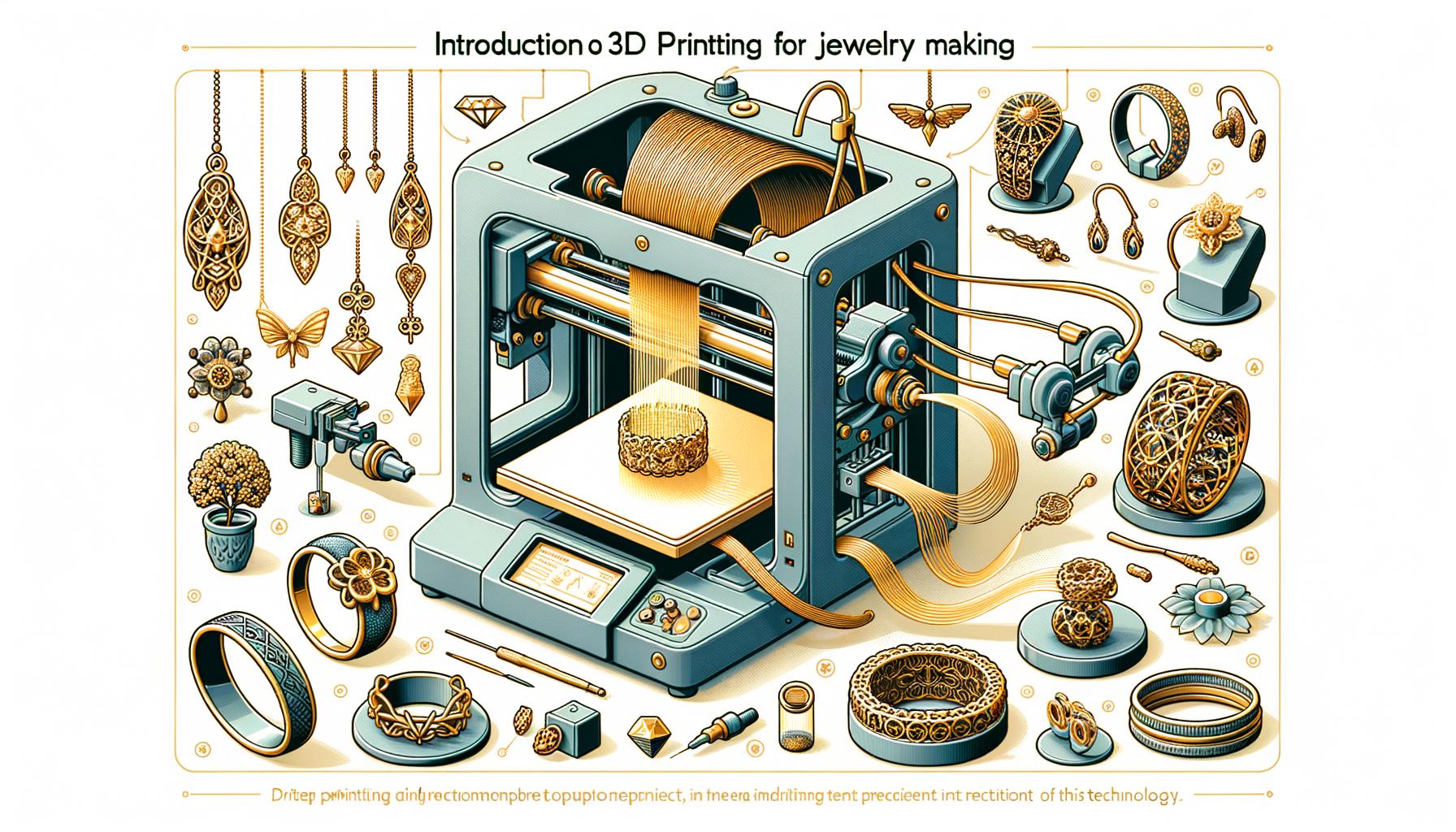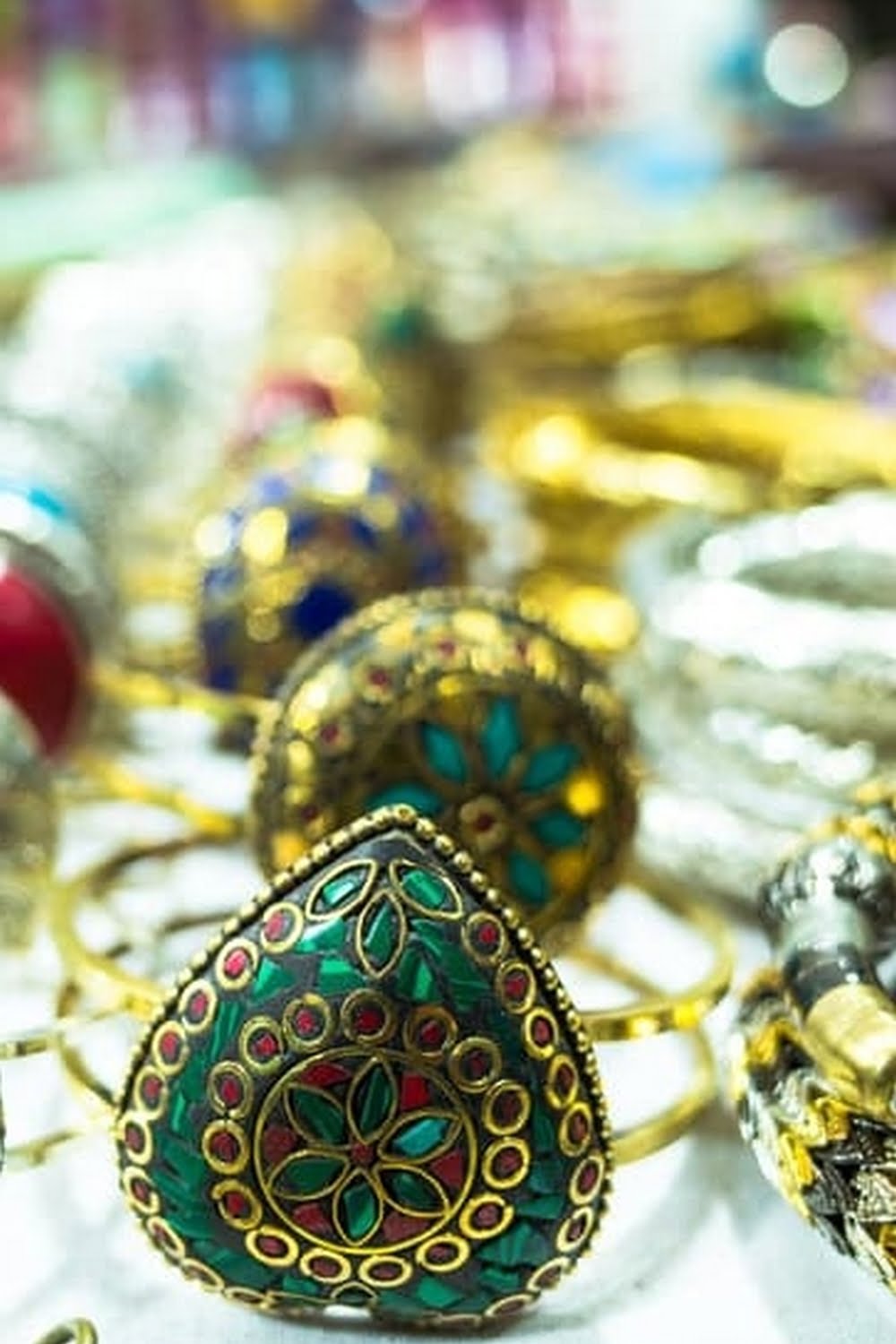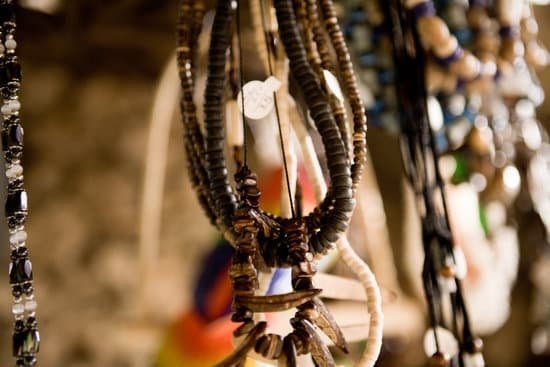In recent years, 3D printing has revolutionized the world of manufacturing and design. Among its many applications, one of the most intriguing is its use in jewelry making. This article serves as an introduction to 3D printing for jewelry making, aiming to uncover how this cutting-edge technology is reshaping the craft of jewelry design and production.
To start with, 3D printing, also known as additive manufacturing, involves creating three-dimensional objects from a digital file by adding material layer by layer. It’s a process that has found applications across various industries-from automotive and aerospace to healthcare and fashion.
In essence, if you can dream it, you can print it. For jewelers, this translates into an unprecedented level of creative freedom; designs that once seemed impossible or too labor-intensive to produce by hand can now become tangible pieces within hours.
Jewelry making has evolved considerably over centuries-from ancient handcrafted techniques to modern methods involving sophisticated machinery. However, the advent of 3D printing marks a new chapter in this storied history. By combining traditional craftsmanship with advanced technology, jewelers are able to push the boundaries of what’s possible. Whether it’s through creating custom engagement rings or intricate necklaces with complex geometries, 3D printing empowers designers to accomplish feats previously unimaginable in the realm of jewelry design and fabrication.
Basic Principles of 3D Printing
3D printing, also known as additive manufacturing, is a process by which digital models are transformed into three-dimensional objects. At its core, the technology involves the layer-by-layer deposition of materials to build up a physical item.
This method contrasts sharply with traditional subtractive manufacturing techniques like carving or milling, where material is removed from a larger block. The introduction to 3d printing for jewelry making brings a similar revolutionary shift to the field of jewelry crafting, allowing designers to experiment with intricate and complex designs that were previously unachievable.
Types of 3D Printing Technologies
Several types of 3D printing technologies are utilized in various industries, each with unique advantages and limitations. In jewelry making, three main types dominate: Fused Deposition Modeling (FDM), Stereolithography (SLA), and Selective Laser Sintering (SLS). FDM works by melting thermoplastic filaments and extruding them layer by layer to create an object; it’s useful for rapid prototyping but may not capture fine details well enough for high-end jewelry pieces.
SLA uses a laser to cure liquid resin into hardened plastic with exceptional detail and smooth finish, making it highly suitable for intricate jewelry designs. SLS employs a laser to sinter powdered material into solid structures, offering impressive durability and precision ideal for producing metal jewelry components.
Materials Used in Jewelry 3D Printing
The choice of material is paramount when creating 3D printed jewelry because it affects both the aesthetics and functionality of the final product. Metals like gold, silver, platinum, and titanium are widely used due to their desirable properties such as luster and strength. These metals can be directly printed using specialized machines or cast through traditional methods after creating 3D printed molds.
Resins are another popular material; they come in various formulations tailored for high detail resolution required in master models or casting patterns. Additionally, newer composite materials are being developed that merge resins with metal powders or ceramic fibers to offer enhanced aesthetics and structural integrity.
Understanding these basic principles sets the foundation for more advanced explorations into the world of additive manufacturing in jewelry making. With this technology’s adaptability across different methods and materials, designers can push creative boundaries further than ever before while maintaining precision and efficiency in their work processes.
Advantages of 3D Printing in Jewelry Making
One of the most significant advantages of 3D printing in jewelry making is the increased design flexibility and customization it offers. Traditional jewelry manufacturing processes can be limiting when it comes to intricate designs, but with an introduction to 3d printing for jewelry making, designers can unleash their creativity without constraints.
Complex patterns, interlocking parts, and intricate filigrees that were once challenging or even impossible to produce by hand can now be brought to life with precision through 3D printing technology. This capability not only allows for the creation of unique custom pieces tailored to individual preferences but also enables mass production of complex designs with consistent quality.
Another key benefit is the enhanced precision and detail achievable with 3D printing. Traditional methods such as casting and handcrafting often rely on human skill and can result in minor imperfections. In contrast, modern 3D printers operate under strict computer-aided specifications, ensuring that each piece meets exact dimensions and aesthetic details consistently.
This level of accuracy is especially critical for settings that require exact measurements for stones and other inserts. The ability to render highly detailed components also opens up new possibilities in micro-jewelry, where even the tiniest elements must be crafted with care.
Furthermore, 3D printing introduces a significant reduction in material waste compared to conventional jewelry-making practices. Traditional methods like carving from larger blocks or casting often involve considerable material loss, which adds to production costs and environmental impact.
With 3D printing, materials are used more efficiently; only the necessary amount of resin or metal powder is utilized layer by layer, minimizing excess waste. This method not only contributes to cost savings but also aligns with growing trends toward sustainable practices within the industry.
The cost-effectiveness and speed of production offered by 3D printing should not be overlooked either. Generating prototypes through traditional means could take weeks due to manual labor and multiple iterations. However, a designer using a reliable setup can swiftly move from digital modeling to physical prototype within hours or days through 3D printing. This accelerated process allows for rapid iteration and testing of ideas before finalizing a piece for production or market release.
Additional factors contributing to these advantages include:
- Lower entry barriers: Affordable desktop printers enable small businesses or hobbyists.
- Material versatility: From precious metals like gold and platinum to innovative resins.
- Reduced labor costs: Automation decreases reliance on extensive manual craftsmanship.
These combined benefits underscore why many designers consider an introduction to 3d printing for jewelry making more than just a trend-it’s a transformative approach reshaping how they conceptualize and create wearable art.
Tools and Software for 3D Jewelry Design
Among the essential tools for diving into the world of 3D printed jewelry, 3D modeling software stands out as a critical component. Programs like Rhino, Blender, and TinkerCAD offer a range of features tailored to various skill levels and design needs. Rhino is renowned for its precision and versatility, making it well-suited for intricate jewelry designs.
Blender, an open-source software, provides powerful sculpting tools ideal for detailed organic forms. For beginners exploring an introduction to 3d printing for jewelry making, TinkerCAD offers a user-friendly interface that simplifies basic design processes.
In addition to software, certain hardware tools are indispensable in a 3D printing setup. Printers designed specifically for fine resolution work are recommended-SLA (Stereolithography) printers are popular choices due to their ability to produce high-detail items using resin materials.
Essential accessories include digital calipers for precise measuring, high-quality filaments or resins suited for jewelry projects, and protective gear such as gloves and goggles when handling certain materials post-printing. It’s also advisable to have some form of ventilation or air filtration system in place if working with potentially hazardous substances.
Accessories that add value to the overall process may involve advanced finishing tools such as rotary polishers and ultrasonic cleaners used to achieve smooth surfaces on printed pieces. Photopolymers used in curing can transform soft prints into durable models ready for casting or wear. Consider investing in software-specific plugins or modules that enhance functionality within your chosen CAD program, expanding the scope of what you can create digitally before any physical printing occurs.
| Tool/Software | Description |
|---|---|
| Rhino | Precision-focused CAD software ideal for intricate designs. |
| Blender | Open-source program offering robust sculpting tools. |
| TinkerCAD | User-friendly interface perfect for beginners. |
Step-by-Step Process of Creating 3D Printed Jewelry
Creating 3D printed jewelry involves several meticulous steps from initial concept to the final polished piece. This journey begins with conceptualizing and sketching designs, where creativity flows onto paper or a digital screen. Designers can draw inspiration from various sources, ensuring that their pieces reflect unique styles and aesthetics.
Once the design is envisioned, the next step is digital modeling and rendering. Here, artists use sophisticated 3D modeling software such as Rhino, Blender, or TinkerCAD to transform their sketches into detailed digital models. These tools offer precision controls and a wide range of functionalities to tweak every aspect of the design. The creation of accurate 3D models allows for better visualization and fine-tuning before any physical materials are used.
After the model is perfected digitally, it needs to be prepared for the actual 3D printing process. This involves converting the design files into formats that 3D printers understand (like STL or OBJ files). During this stage:
- Designers must ensure that the models are error-free by using repair tools within their software.
- They need to scale their designs properly to match desired dimensions.
- Choose appropriate support structures if required, especially for complex designs.
When ready, designers proceed with printing using suitable materials – resins for intricate details or metals for durability. Post-processing is crucial; it includes removing supports, polishing surfaces, and adding any finishing touches that bring out the aesthetic appeal of each piece.
Throughout these steps in an introduction to 3d printing for jewelry making, attention to detail and a keen understanding of both technological capabilities and artistic vision are essential components in crafting stunning jewelry pieces efficiently.
Case Studies
Many designers have revolutionized the jewelry industry with their unique and intricate 3D-printed pieces, demonstrating the technology’s potential. One such designer is Jenny Wu, who co-founded LACE by Jenny Wu. Known for her architectural approach to jewelry design, Wu leverages 3D printing to create complex geometric patterns that would be nearly impossible to achieve through traditional methods. Her successful use case exemplifies how designers can push creative boundaries using this innovative technology.
Another noteworthy example is the work of Nervous System, a design studio that combines science, art, and technology to produce stunning pieces. Using algorithms inspired by natural phenomena, Nervous System creates intricate designs that are 3D printed into wearable art forms. Their Kinematics Dress, made from thousands of interlocking components and customized for individual wearers using body scans, highlights the unmatched customization possibilities offered by 3D printing.
Shapeways, an online marketplace and community for makers utilizing 3D printing, has also seen a surge in demand for customized jewelry. Many independent artists have successfully launched their own lines on the platform. For instance, designer Diana Law uses Shapeways for its sophisticated printing processes in precious metals like silver and gold. These materials enhance her minimalist yet elegant designs’ precision and visual appeal.
| Designer | Notable Work | Materials Used |
|---|---|---|
| Jenny Wu | LACE Jewelry Collection | Nylon, Metals |
| Nervous System | Kinematics Dress | Nylon Polymer |
| Diana Law (Shapeways) | Minimalist Jewelry Line | Silver, Gold |
These case studies not only provide inspiration but also serve as an introduction to 3d printing for jewelry making enthusiasts who are keen on exploring this modern craft’s limitless potentials. By examining such successful applications of the technology in real-world scenarios, newcomers can better understand how they might translate their own creative visions into tangible pieces using 3D printing.
Challenges and Considerations
Embarking on the journey of 3D printing for jewelry making comes with its unique set of challenges and considerations that every designer must navigate. One common pitfall in the process is mastering the digital modeling techniques required to produce intricate and highly detailed designs.
While software like Rhino or TinkerCAD can be powerful tools, they also come with a steep learning curve. It’s essential to invest time in gaining proficiency with these programs to avoid design flaws that could ruin an entire print.
Another vital consideration is the durability and wearability of the materials used. Although there are numerous options available-from metals to resins-not all materials offer the same level of longevity and comfort when worn as jewelry. For instance, low-quality resins might look aesthetically pleasing but can easily break or degrade over time, especially if exposed to harsh environmental conditions. Ensuring that your chosen material meets both aesthetic and functional requirements is crucial for producing lasting pieces.
Maintenance of 3D printed jewelry adds an additional layer of complexity to this innovative crafting method. Unlike traditional metalworking techniques, where maintenance practices are well-established, maintaining 3D printed items may require special knowledge.
Proper care techniques depend on the type of material used; for example, metal pieces can tarnish if not treated with appropriate coatings, while resin items may need special cleaning solutions to maintain their appearance. Understanding the specific maintenance needs for each material ensures that your creations continue to shine long after they’ve left the printer.
In navigating these obstacles, bringing an introduction to 3d printing for jewelry making into practice involves continuous learning and adaptation. Each hurdle offers an opportunity not just to improve one’s skillset but also to push creative boundaries, enabling designers to craft unique, customized pieces that stand out in a competitive industry.
Future Trends in 3D Printed Jewelry
Innovations in 3D Printing Technology and Materials
One of the most exciting future trends in 3D printed jewelry is the continuous advancement of 3D printing technology itself. As printers become more sophisticated, they offer higher levels of precision, faster production speeds, and greater material compatibility.
Innovations such as multi-material printers are beginning to allow for more intricate designs that combine different materials seamlessly within a single print. Additionally, advancements in metal 3D printing are opening new doors for jewelers to create complex metallic pieces that were previously impossible or too costly to manufacture using traditional methods.
In tandem with technological advancements, there is ongoing research into novel materials specifically suited for jewelry making. Emerging materials like flexible resins, biocompatible metals, and even biodegradable polymers offer unique aesthetic and functional properties. As these materials become more accessible and cost-effective, jewelers will have an expanded toolkit to bring their creative visions to life in new and unexpected ways.
Potential for Sustainable and Eco-Friendly Practices
Another significant trend in the realm of 3D printed jewelry is the movement towards sustainability. As environmental concerns become increasingly important to consumers, jewelers are seeking out greener alternatives to traditional practices. The introduction to 3d printing for jewelry making has shown that additive manufacturing can substantially reduce material waste when compared to conventional subtractive methods like carving or casting. By using only the amount of material needed to create each piece, jewelers can minimize their environmental footprint.
Moreover, recyclable materials and biodegradable options are becoming popular among designers committed to eco-friendly practices. For example, some companies are now offering plant-based resins that produce significantly less pollution during the manufacturing process. Innovations like these not only attract environmentally conscious customers but also set a positive precedent across the industry.
Emerging Trends and Their Potential Impact on the Jewelry Industry
The future of 3D printed jewelry isn’t just about technological improvements; cultural shifts are playing a vital role as well. One emerging trend is mass customization-allowing customers to have personalized input into their purchases without sacrificing efficiency or quality. Using advanced software and intuitive interfaces, buyers can now co-design pieces with jewelers directly online, selecting custom sizes, engravings, and even shape modifications before placing an order that will be precisely manufactured using 3D printing technologies.
Additionally, hybrid techniques combining traditional craftsmanship with modern digital tools are expected to gain traction. Many artisans are recognizing the potential harmony between age-old skills and futuristic technologies brought by an introduction to 3d printing for jewelry making. By merging these approaches, jewelers can produce highly detailed pieces that retain a handcrafted feel while benefiting from the precision and consistency offered by 3D printing.
These trends suggest a bright future where innovation meets tradition-a melding of art with cutting-edge technology that promises limitless possibilities for both creators and consumers alike within the world of jewelry making.
Conclusion
In summary, the introduction to 3d printing for jewelry making opens up a world of opportunities for both novice and experienced jewelers. With its flexibility, precision, and cost-effectiveness, 3D printing has revolutionized the industry, allowing for greater creative freedom than traditional methods ever could. Through understanding the basics of how this technology works and exploring the various software and tools available, aspiring designers can confidently embark on their journey.
Key factors such as increased design flexibility enhance not only the artistic aspect but also offer tangible benefits such as reduced material waste and quicker production times. These advancements have been particularly advantageous in producing complex designs that would have been nearly impossible or highly cost-prohibitive with conventional techniques. Seeing real-world applications through case studies emphasizes just how impactful 3D printing has become in transforming ideas into exquisite pieces of wearable art.
Looking ahead, innovations in both technology and materials promise to push boundaries even further. Sustainable practices are gradually being integrated, giving designers a chance to create eco-friendly jewelry without compromising on quality or beauty. The ongoing evolution suggests a bright future where creativity knows no bounds, continually reshaping what is possible in jewelry making today and tomorrow.
Additional Resources
In summary, the exploration of 3D printing in jewelry making reveals a transformative shift within this timeless craft. By offering unprecedented design flexibility, enhanced precision, and cost-effective production methods, 3D printing is propelling jewelry design into new realms of creativity and accessibility.
From conceptualizing intricate designs to rendering them digitally, preparing files for printing, and applying finishing touches, each step underscores the potential of this advanced technology to revolutionize traditional techniques. The introduction to 3d printing for jewelry making has shown us that innovation in materials and processes ushers in opportunities for both established designers and budding enthusiasts.
Enthusiasm for this burgeoning technology is further bolstered by successful case studies highlighting pioneering designers who have leveraged 3D printing to create stunning and unique pieces. Their experiences provide valuable insights into both the creative possibilities as well as practical considerations such as durability and maintenance. Furthermore, the ongoing advancements in 3D printing promise to fuel even greater innovations in jewelry making-potentially fostering more sustainable practices and introducing novel materials that could redefine what is possible within the industry.
To those intrigued by this intersection of art, technology, and craftsmanship: now is an opportune time to delve into the world of 3D printed jewelry. Embrace experimentation with this dynamic toolset, and consider diving deeper through additional resources like books, online tutorials, courses, and vibrant community forums that support continued learning.
By pushing the boundaries of what can be imagined and achieved in jewelry making through 3D printing, you join a movement that harmonizes age-old artistry with cutting-edge technology.
Frequently Asked Questions
How Is 3D Printing Used in Jewelry Making?
3D printing in jewelry making is revolutionizing the industry by offering designers unprecedented levels of creativity and customization. Instead of traditional casting methods, designers can now create complex, intricate designs with digital precision. This allows for bespoke pieces tailored to individual preferences.
Often, a high-resolution wax model is first printed and then cast in precious metals like gold or silver through lost-wax casting. This method not only reduces waste but also speeds up the prototyping process, enabling quicker turnaround times from concept to final product.
How to Print Jewelry With a 3D Printer?
To print jewelry with a 3D printer, one typically starts with a CAD (Computer-Aided Design) software to create detailed digital models of the desired pieces. Once the design is finalized, it is then sliced into layers and exported as a file compatible with 3D printers.
A specialized resin printer or a printer capable of creating high-resolution wax models is commonly used for fine details required in jewelry making. After printing, the model undergoes post-processing steps such as cleaning and curing, followed by casting if using a resin or wax original mold.
How Long Does It Take to 3D Print Jewelry?
The time required to 3D print jewelry greatly varies depending on factors such as the complexity of the design, the type of printer used, and the material employed. Typically, simpler designs may take just a few hours to complete while more intricate pieces can take several hours or even multiple days when accounting for post-processing tasks like casting and polishing.
Generally, printers that produce higher resolution results tend to take longer because they work layer by layer at very fine scales to capture all necessary details accurately.

Welcome to my jewelry blog! My name is Sarah and I am the owner of this blog.
I love making jewelry and sharing my creations with others.
So whether you’re someone who loves wearing jewelry yourself or simply enjoys learning about it, be sure to check out my blog for insightful posts on everything related to this exciting topic!





